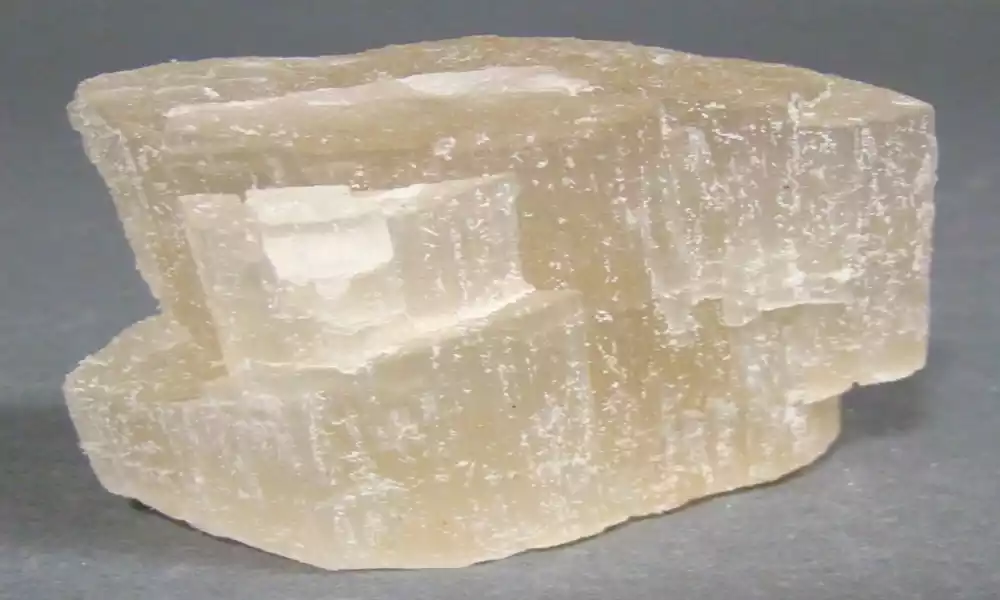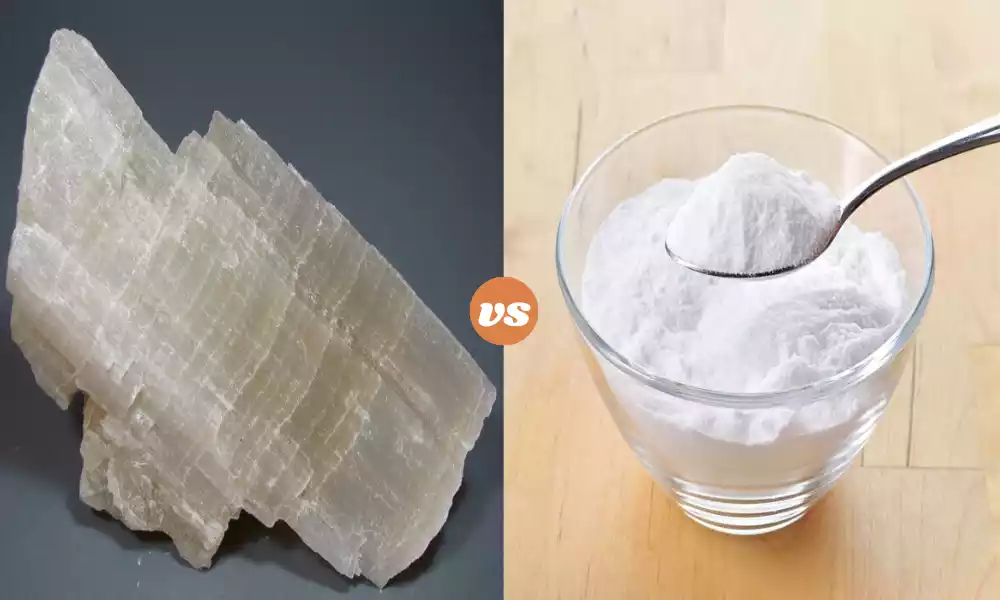What Is The Difference Between Natron and Baking Soda
Natron and Baking Soda are two common household products that you may not know have significant differences. Simply put, Natron is a natural mineral that is found in the earth, whereas Baking Soda is a manufactured item.
Natron has been utilized by humans for many thousands of years, going back to ancient civilizations, such as the Egyptians. Baking Soda is a modern invention that was created in factories to aid with various chores in our homes.
Knowing the differences is crucial as it impacts the way we apply the substances we use in our everyday lives. So, let’s explore the differences between Natron as well as Baking Soda to make informed decisions and make use of the substances in a safe and effective manner.
What is Natron?
Natron can be described as an organic mineral with many years of history of practical applications. Natron is usually seen as a white or colorless material in locations with lots of sodium carbonate as well as baking soda.
The use of Natron for a considerable period of time dates way back to ancient civilizations such as the Egyptians. It was used for the preservation of the remains of mummies, for cleaning, as well as in cooking.

Natron is often thought of as a close cousin to baking soda. It is a product with similar properties and is used in similar ways. It can, for instance, be employed as a cleansing agent, or as an ingredient in baking as a leavening agent.
What distinguishes Natron from other ingredients is its origins in nature which makes it a sustainable and less processed choice. Being aware of Natron will help you make more informed decisions in your everyday life and select organic solutions that have a hint of historical background.
Natron Formula
The chemical formula of Natron is a bit different based on the state of its hydration. The Natron that is hydrated Natron that is typically encountered throughout nature is usually described as Na2CO3*3H2O or Na2CO3*3H2.
This formula reveals the presence of water molecules (H2O) in addition to sodium carbonate (Na2CO3) compound. The exact formula could differ depending on the particular location and the conditions that are affecting the Natron.
What is Baking Soda?
Baking soda is a variety of products that play an essential role in all aspects of our lives. It’s a transparent powdery substance derived from sodium bicarbonate. This popular kitchen ingredient is renowned for its leavening capabilities, making it a crucial ingredient in baking. It also causes breads and cakes to rise.
Alongside its culinary advantages in addition to its culinary advantages, baking Soda is also a major player in the world of cleaning. It functions as a mild deodorizer and an abrasive cleanser. It can take off stubborn stains, get rid of the smells, and help you clean your teeth.

To treat health and personal treatment Baking Soda has many uses. It can help soothe skin irritations act as a natural deodorant, and help improve oral hygiene.
Baking soda can be affordable and long-lasting and is an excellent ingredient to use in your home. Understanding the various applications that it offers will allow you to make the most of the power of baking soda in cooking, cleaning, and taking care of your personal needs, all while still being organic and cost-effective.
Baking Soda Formula
The chemical formula of Baking Soda is NaHCO3. It is the chemical formula used to describe the composition of Baking Soda and indicates that there is just one sodium (Na) atom and a hydrogen (H) particle as well as a carbon (C) atom as well as 3 oxygen (O) atoms within the atoms of Baking Soda.
Key Difference Between Natron and Baking Soda
Here’s a comparison chart that summarizes the key differences between Natron and Baking Soda:
| Aspect | Natron | Baking Soda |
|---|---|---|
| Chemical Composition | Primarily sodium carbonate, often hydrated | Sodium bicarbonate |
| Natural Origin | Naturally occurring mineral | Synthetic production |
| Historical Use | Mummification, cleaning, cooking | Modern culinary, cleaning, personal care |
| Physical Properties | White, powdery, soluble in water | White, fine powder, highly soluble |
| Environmental Impact | Eco-friendly, natural sourcing | Eco-friendly but involves production |
| Cost and Availability | May vary depending on the source and region | Generally widely available and affordable |
| Health Uses | Limited to mild antacid and skin care | Dental care, antacid, deodorant |
What Is the Chemical Composition of Natron and Baking Soda?
Natron:
- Sodium carbonate (Na2CO3): Natron is made up of sodium carbonate. This chemical compound is comprised of 2 sodium (Na) atoms as well as a carbon (C) electron as well as three oxygen (O) atoms. The chemical formula for Na2CO3 is. It is a mineral that occurs naturally.
- Hydration: Natron is often found in a form that is hydrated which means it has water molecules (H2O) inside its crystal. Water molecules are present in Natron, which makes it a salt that has been hydrated. The hydrated form is often known as sodium sesquicarbonate.
- Nature Origin: The composition of Natron is derived from nature, generally found in deposits near alkaline lakes and dry lakes in dry regions. Natural origins contribute to its past use and ecological friendliness.
Baking Soda:
- Sodium Bicarbonate (NaHCO3): Baking Soda, or sodium bicarbonate is composed of mainly carbon, hydrogen, sodium carbon, and oxygen atoms. The chemical formula, NaHCO3 is a representation of the sodium (Na) atom as well as a hydrogen (H) particle and a carbon (C) carbon atom along with three oxygen (O) atoms.
- Pure Chemical Compound: Baking Soda is a chemical compound that is pure, and does not contain water molecules inside the crystal structures. The powder is a dry crystallized white powder.
- Synthetic Production: Baking Soda can’t be found in nature like Natron is. It is made industrially by chemical processes that require sodium chloride (table salt) and ammonia.
Physical properties of Natron and Baking Soda?
Let’s take a look at these properties:
Natron:
- Display: Natron usually appears white or crystalline solid or powder-like table salt.
- Texture: The texture is smooth, and fine texture it is in its powdered state and could have a different texture depending on its condition of hydration.
- Solubility: Natron is water-soluble. This means it will dissolve after mixing with liquid.
- The taste and odor: Natron has a somewhat alkaline flavor, and could possess a slight odor dependent on the source and the purity of its.
Baking Soda:
- Appears: Baking Soda is also a white powder that is fine and smooth that is often similar to powdered sugar, or flour.
- Texture: It has a texture, both fine and powdery in dry form.
- Solubility Baking soda is extremely soluble in water and easily dissolves when it is added to liquids.
- Odor and Taste: Baking Soda has the taste of salty and a neutral, or slightly salty odor that makes it ideal for a variety of cooking applications.
What Are the Uses and Applications of Natron and Baking Soda?
Natron:
- Application History: Natron boasts a lengthy history and was utilized by ancient civilizations such as the Egyptians for cleaning and mummification. Natron played an important part in the preservation of bodies and in removing odors during the process of mummification.
- Modern Applications: In modern times, Natron finds application in environmentally friendly cleaning. Natron is an effective and natural cleaning agent for different surfaces due the its mild, abrasive characteristics.
- Cooking: Certain people use Natron as a leavening agent for baking like Baking Soda but it’s not used as often for this use in contemporary cooking.
Baking Soda:
- Culinary uses: Baking Soda is an extremely popular leavening agent used in baking. It aids batters and doughs to rise, which results in light and soft baked products, such as cookies, cakes, and pancakes. It also helps to tenderize meat and enhance the texture of some dishes.
- Cleaning and Household Applications: Baking Soda is an effective household cleaner. It is utilized to scrub surfaces, eliminate stains on carpets, remove odors from carpets and even to put out smaller kitchen fires. It is also able to help maintain the pH balance of swimming pools.
- Personal Care Baking Soda can be present in many personal care products, such as toothpaste, deodorants, as well as bath soaks. It is a popular ingredient for its neutralizing odor and abrasive characteristics.
- Therapeutic uses: Baking Soda can be used as an anti-acid to treat gastric and stomach indigestion when taken in a proper amount and under medical supervision.
Is Natron vs Baking Soda environmentally friendly?
Natron as it is in natural forms, is considered to be environmentally friendly. It comes from natural deposits, which are usually located in areas of desert near alkaline lakes.
Its extraction procedure is easy, and the substance is not subject to major chemical transformation. This is what makes Natron a more green and sustainable option, particularly for those who want to minimize their environmental footprint.
Baking Soda is however produced through manufacturing procedures. Although it is greener than other cleaning products that are synthetic it also requires the consumption of energy and resources in its production. The transport as well as the packaging for Baking Soda can have environmental effects.
Which is Better for Your Well-being: Natron vs Baking Soda
Natron:
- Digestive Health: Natron when taken with caution and under guidelines, may have mild anti-inflammatory properties. It may aid in relieving stomach acidity and heartburn. Natron is known for its capability to neutralize stomach acid.
- Skincare: Natron is used in various skincare products because of its gentle exfoliating qualities. It is able to help eliminate dead skin cells and help promote a healthier and more radiant complexion.
- Eco-friendly Cleaning: Utilizing Natron to clean can in turn aid in improving the quality of indoor air and may be beneficial to respiratory health. Natron’s mild abrasive qualities permit it to be used for scrubbing, without harsh chemicals.
Baking Soda:
- Oral Health: Baking soda is commonly utilized in mouthwash and toothpaste due to its ability to bleach teeth as well as neutralize odors. It could contribute to more hygiene in the mouth and healthier breath.
- Digestive Health: Similar to Natron Baking Soda is a good choice as an anti-inflammatory to alleviate stomach acid and heartburn when consumed in the right amounts and with medical supervision.
- Deodorant: Baking soda is present in a variety of natural deodorants due to its ability to neutralize odors. It helps to control underarm odors without the need for harsh chemicals.
Conclusion
Natron along with Baking Soda While both are effective, each has its own distinct features. Natron is a mineral that’s naturally similar to salt with a long history and a long history of use in the preservation of mummies, cleaning, and cooking.
It’s a green and earth-friendly. Baking Soda is a manufactured product is a kitchen modern cleaning machine, generating dough and fighting smells and stains. It’s cost-effective and versatile.
Knowing the difference can help you decide between the tried-and-true method of natural Natron and the ease and efficacy of Baking soda, based on your particular requirements. These two products cater to different needs and preferences Understanding their distinct characteristics is crucial to make informed decisions.


